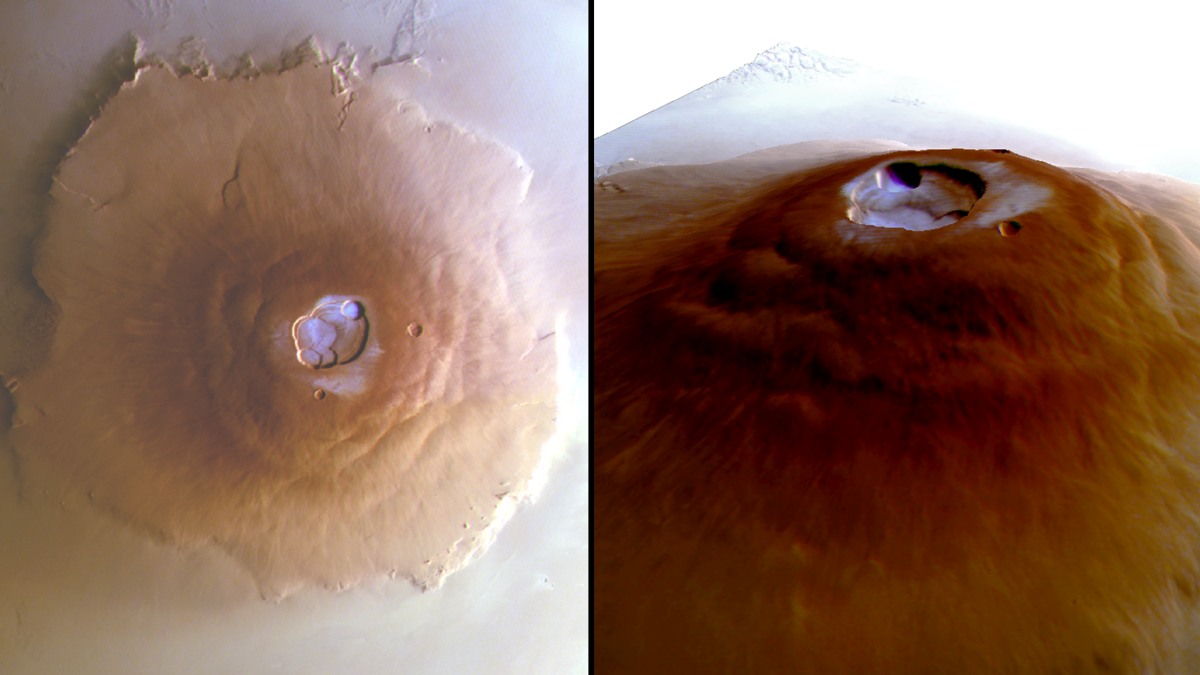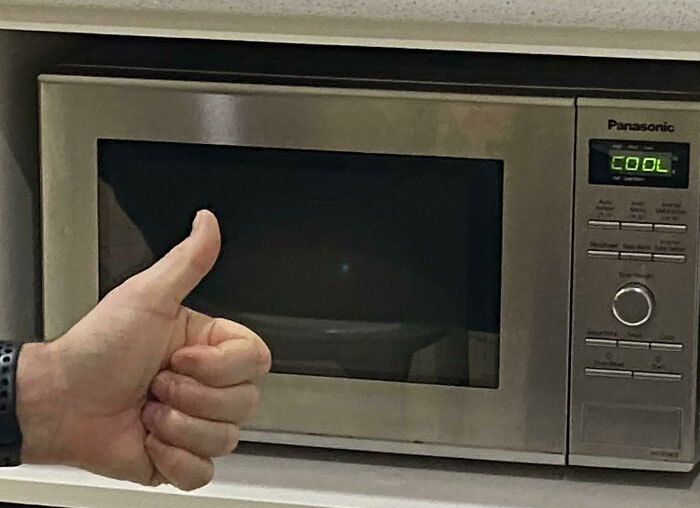In my lifetime we’ve gone from ‘there’s no water on Mars’ to ‘there’s tons of water all over the equator, evaporating into the atmosphere daily then freezing on the surface at night’. Which is pretty cool.
Well it’d have to be or it wouldn’t freeze
Dad! 🙄
<3
Father’s day isnt quite here yet dad
Quick, send 200 billionaires to Mars to confirm this.
Just give first dibs to Nestle. They will find a way to get there.
I doubt it. There are no indigenous people there that rely on that water so nestle wouldn’t be motivated enough to get it.
Yeah, it’s no fun without the cruelty
Careful! I’m told those individuals are responsible for nearly all productive work on the planet.
But don’t bring them back.
Don’t send Elon, though. I’d rather we not contaminate the planet.
I’d rather contaminate Mars with him than Earth.
Let’s just launch him into the Sun.
Sadly, it takes a shit ton of energy to get things to the sun. Everything is moving very quickly around the sun. You need the opposite amount of energy to fall in.
You only need enough energy to get it down to the orbit of Venus, plus a little bit extra for some gravity assists around Venus and Jupiter. Those will shoot it to the edge of the solar system where a tiny bit of thrust will kill the remaining angular momentum and let it fall back into the sun.
Oh, and it will take a century.Speaking as an aerospace engineer, of course. But it’d be a worthy um…expenditure?
Without their money
What would they do with their money on Mars?
Same thing they do here, hoard it
Use it to extract more money from the indentured servants they conned into going.
You think Jeff bezos is gonna be putting up the solar panels?
You think the air in mars habitats is gonna be free?
We should send up some sea monkeys for hahas.
/s
We should send genetically modified cockroaches and algae. Then check back 500 years later. Surely there’s no way it can go wrong
JOHJ in the distance
somebody stop Nestle before it’s too late
🥂 this mf lmao
“We can’t allow the martians to continue to benefit from free water”
The Martian nipple.
Looks like a pimple under a microscope to me lol
Who wants to sickle on that teat?
…needs to see a doctor about that infection, or at least get some Viaderm-K.C.
Another one for the books!
https://en.wikipedia.org/wiki/Chronology_of_discoveries_of_water_on_Mars
I was about to say; isn’t this about the dozenth time they’ve found water on Mars? It’s not news anymore.
It’s the location that’s surprising.
Yeah, you’d expect milk there
There’s an image on Wikipedia I can’t find showcasing water on Mars.
A glass of water on a Mars bar.
Not the exact image but close enough
Never mind, it’s not close enough.
Because I found it.

Nice sleuthing!
The link now says “content no longer available”. Were you able to track down the original Wikipedia article as well?
https://en.m.wikipedia.org/wiki/Wikipedia:Best_of_BJAODN
Section: ♥Water on Mars♥
I’ll try to find it.
deleted by creator
I wonder: Is there any experiment done on Mars that uses Spectroscopy to detect water?
I’m thinking of something like this:

Due to Absorbance, wet air should absorb specific frequencies of light.
Wow that’s incredible. We’re still making such incredible discoveries despite Mars being so close to home.
Funny how we consider that “close” in terms of space. It’s such a massive distance we can’t really comprehend it and it’s only the first planet out from us. Even at the speed of light it would take 3 minutes+ to get there! I’m no spacengineer but that’s like 186k miles per sec. Or something. Space is big. Really big.
Bigger even than 1989 Belgian techno anthem “Pump up the Jam”.
Awa, a place to stay · Get your booty on the floor tonight. Make my day…
Make my dayyyyyy
But is it bigger than the pecs on the early internet viral sensation Techno Viking?
For comparison, you can travel around the Earth’s equator several times per second at the speed of light.
wish someone would discover Warp Drive already or…I wish someone would discover something more “interesting” like The Warp. would you rather use crystals to travel at warp speed OR, and just bare with me here, OR would you rather travel through an alternate dimension filled with demons and gods that want to enslave you where you need powerful psychics to navigate and a massive “light house” potentially powered by one God-like human in order to find your way back to Earth.
I think the second option is way more “fun”.
Also, the comparatively small and weak gravitational field of Mars has made it a most challenging target in the solar system, behind only Mercury and the Sun itself.
Of course, through trial and error, with better know-how and tech, they have gotten increasingly competent and even reliable at the task.
the frost patches cover a vast area of each of the volcanoes, and its water content could fill roughly 60 Olympic swimming pools, measuring close to 29.4 million gallons (111 million liters) of water.
Wow! That’s far more than I expected. I think it’s probably more than anyone expected!
Mars nipple
I’ve seen this dr.who episode
We should use the ice water to grow carrots and then look lovingly at the carrots and then hopefully we don’t a zombies
Did you maybe a word?
wait til they find oil…
Oil discovered on Mars
US gov: So anyways, we’ve decided that we suddenly LOVE NASA and are going to divert 1T$ to it
Breaking news: terrorist operation discovered on Mars, potential of wmds.
The Bush administration suddenly decides Mars is ripe for regime change.
Titan has oil and we have known for decades
Materialize some non-white insurgents, FREE 🦅 them, profit
Isn’t that Olympus Mons? 7 miles up?
Lemmy read the article for you. Yes.
The frost sits within the Tharsis area, the largest volcanic region on Mars, which hosts 12 large volcanoes. This includes Olympus Mons, which is not only the tallest volcano on Mars but is also the tallest peak in the solar system at the height of 18.6 miles (29.9 kilometers), making it around 2.5 times the height of Mount Everest, the tallest mountain on Earth.
Had a hunch so I googled the size of Phobos just now: 27 by 22 by 18 kilometers. Olympus Mons is larger than the bigger of Mars’ two satelites.
Though it’s probably more that I severely underestimated just how tiny Phobos and Deimos are. They feel bigger in Doom…
Where?
There!
Is there any sign of bacterial life? Amazing find.
Pimple
Oh great. More places we won’t be able to send rovers then.
That is a very weird take for such amazing news
So… It’s not weird if you have ever worked to try to get funding to do mars exploratory missions with the approval of the planetary councils.
One of the big rules is we can’t go where we think there might be water and therefore life on Mars unless we can prove our device is 100% sanitized. To the point where a friend and colleague gave up and suggested we just shoot the surface with a copper ball and just collect the dust once it’s in upper atmosphere.
Also, I was already part of a group that was taking pictures of lava tubes and we discovered cracking and shifting soil like a decade ago letting us know we had found surface water. It’s kinda old news to me.
Edit: I guess the interesting part of this discovery is specifically that it’s frost since that is a unique form for the water to take especially there. Since we would expect it to sublimate pretty quickly.
Wait you work on Mars missions?! What the heck do you do man that’s awesome!
Not anymore. I couldn’t get funding for either of my projects and literally couldn’t figure out to do with my dual majors in theoretical astrophysics and xenobiology.
So now I work basically just IT support…
I helped build the infrared cameras for some satellites, nothing like getting a stack of diamond disks for lenses and just tossing half of them for impurity reasons to make you understand how the budgets end up so high.
And I was using the THEMIS camera for specifically work with mars atmospheric and habitability studies.
Edit: I dunno here is a fun side fact. Because of my past life, I have had direct interactions with Bill Nye (the science guy), that make me know he is an asshole, and I consider him to be a negative force on the scientific community. Just all around a self absorbed anti intellectual.
guess the interesting part of this discovery is specifically that it’s frost since that is a unique form for the water to take especially there. Since we would expect it to sublimate pretty quickly.
If I am understanding the article. On Mars it’s backwards compared to earth. Earth it is higher you go the colder it is. So to get frost up that high means air currents containing cold water are rushing up to that spot.



















